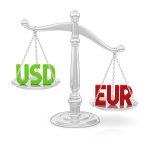US Dollar Index Pressured as Trade Tensions Simmer Ahead of Weekend Talks
The US Dollar Index (DXY), which measures the greenback’s value against a basket of six major currencies, experienced a sharp reversal on Friday. After climbing as high as 100.86—its highest level in nearly a month—the index dipped to around 100.30 as markets reassessed the upcoming trade talks between the United States and China, slated for the weekend in Switzerland.
The Friday retreat signals a cooling of the bullish sentiment that briefly lifted the greenback, as geopolitical and trade uncertainties again dominate investor focus. Earlier in the week, optimism surrounding a US-UK trade announcement had pushed the US Dollar higher. However, upon closer inspection, market participants are discounting the announcement as lacking substance, particularly because it preserves US tariffs on British goods.
Trump’s Tariff Bombshell Adds to Volatility
Just ahead of the US session, President Donald Trump added more fuel to the fire via a post on his Truth Social Network, suggesting that an 80% tariff on Chinese goods “seems right.” This remark has dramatically overshadowed hopes of constructive dialogue at this weekend’s diplomatic meeting.
While the proposed tariff level may serve as a negotiating tactic, it underscores the aggressive posture the US may take into the discussions. Trump did signal some flexibility—reportedly open to reducing tariffs to 50% if China shows meaningful cooperation—but that remains a big “if.”
This escalation in rhetoric comes at a delicate time for financial markets, which are already grappling with an uncertain global outlook and mixed economic signals from both the US and China. Bloomberg reports that this positioning casts doubt on how effective the US will be at the negotiating table.
UK Deal Fails to Impress Markets
The previously hyped US-UK trade arrangement is being viewed by markets as symbolic at best. The US retains its 10% tariff on British exports, while merely gaining broader access to UK consumer markets. From an economic standpoint, the UK is a relatively minor partner in terms of US trade exposure. The lackluster agreement undermines confidence that Washington will secure a more meaningful outcome with Beijing over the weekend.
Traders are adjusting their positions ahead of the Swiss talks, hedging against the possibility that negotiations could stall or even deteriorate further, given the hardened stances on both sides.
China Draws the Line on Tariffs
China, for its part, is holding firm. The Chinese Ministry of Commerce has reiterated multiple times this week that meaningful trade negotiations cannot begin unless the US unilaterally drops its tariffs. That demand is in direct conflict with Trump’s public position, creating a potentially irreconcilable gap before talks even begin.
Moreover, the Chinese side reportedly sees these meetings as “damage control” rather than genuine trade negotiations. The emphasis appears to be on de-escalation, not agreement—a subtle but important distinction that explains why markets are not anticipating any major breakthrough.
Fed Speakers Crowd the Calendar
Adding another layer of complexity to the day’s trading action, a slew of Federal Reserve speakers are delivering remarks throughout Friday. Their comments could shape expectations around monetary policy—especially as markets remain sensitive to any hint of a pivot on rate cuts.
Among the key Fed events on Friday:
- 12:30 GMT: Fed Governor Adriana Kugler and New York Fed President John Williams speak at the Reykjavik Economic Conference.
- 14:00 GMT: Chicago Fed President Austan Goolsbee offers opening remarks at the Fed Listens event.
- 15:30 GMT: Fed Governor Christopher Waller participates in a policy panel at Stanford.
- 22:45 GMT: Fed Governors Lisa Cook, Beth Hammack, and Alberto Musalem join a productivity panel, also at Stanford.
Markets will be parsing these speeches for clues on the Fed’s rate path, with attention on whether the central bank views inflationary pressures as sticky enough to delay the expected rate cuts into the latter half of 2025.
Interest Rate Expectations Shift Slightly
The CME FedWatch Tool shows that traders see only a 17.1% chance of a rate cut in June, reflecting the Fed’s cautious stance in recent communications. However, expectations for July are far more dovish, with 63.2% odds now priced in for a rate cut.
The mixed signals reflect broader uncertainty about the strength of the US economy and whether inflation will cool fast enough to allow the Fed to ease policy without reigniting price pressures.
Meanwhile, the 10-year US Treasury yield is trading near 4.37%, rebounding slightly after a midweek dip. Rising yields are typically dollar-positive, but in this case, the DXY appears more influenced by risk sentiment and geopolitics than by interest rate differentials alone.
Equities Edge Higher, But Caution Prevails
Despite the geopolitical noise, equity markets are modestly higher on Friday. European indices are up around 0.5%, while US stock futures are essentially flat, showing less than 0.5% gains.
This muted price action suggests investors are holding fire ahead of this weekend’s developments. The risk of further tariffs, or even a breakdown in diplomacy, is likely capping any enthusiasm in both stocks and the currency market.
Technical Outlook: US Dollar Eyes 100.22 for Support
From a technical perspective, the DXY’s pullback has brought the index close to a key support level at 100.22. This level served as resistance earlier in the week and now acts as a potential pivot point for the next move. If support holds, we could see another attempt to challenge the 100.86 high. But a break below 100.22 could open the door to a more pronounced retracement toward the 99.80 region.
Traders will be closely watching for any headlines over the weekend to inform Monday’s open and direction. With the US Dollar in a sensitive technical zone, weekend trade developments could act as the trigger for either renewed buying or a steeper sell-off.
[faq-schema id=”39546″]









